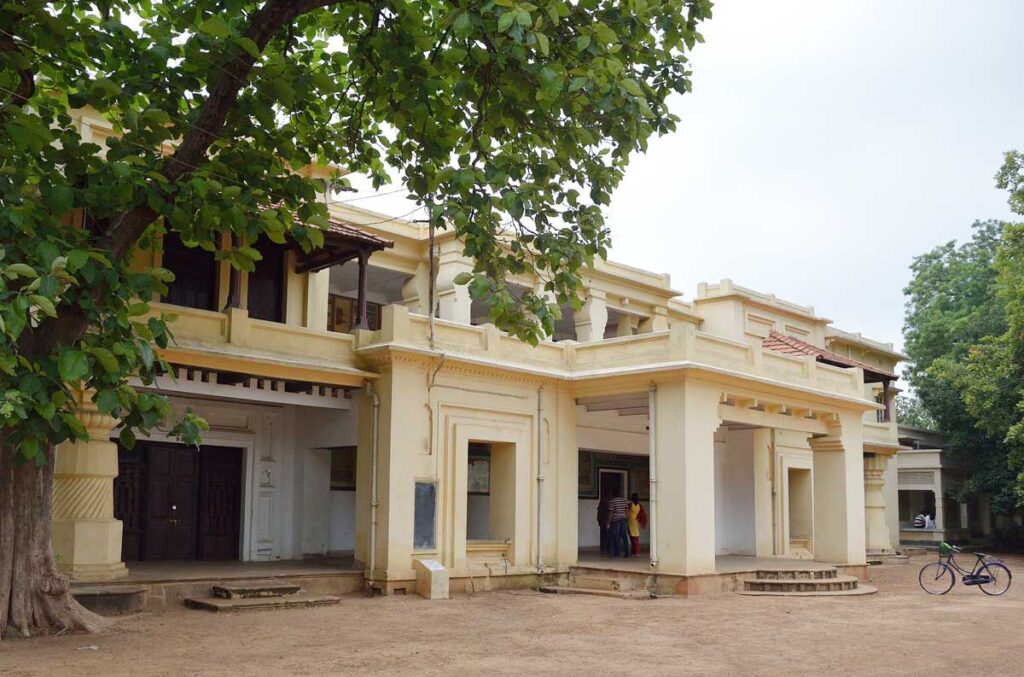Patha Bhavana is partly a residential co-educational school for elementary and secondary education, preparing students for the School Certificate Examination of Visva-Bharati. Patha Bhavana was founded by Rabindranath Tagore in the year 1901. Patha Bhavana is situated in front of Singha Sadan & north of Gour Prangan. The ground floor was constructed by Balendranath Tagore in 1899, and the first-floor roof was covered by straw. Rabindranath named this house ‘Balvi Kuthir’. Initially, it was started as Bramhacharya school with only five students. In the early years, from 1901 to 1921, this school was known as the Santiniketan Brahmacharyasram; during 1921 and 1924, it came to be called the Visva-Bharati Purbavibhaga; and from 1925, it became Patha Bhavana. The school was founded with the philosophy of learning in a natural environment with the heart in closeness to nature without any superficial barriers between teachers and students, as opposed to the strict, repetitive, and rote learning system that was mainstream during Tagore’s childhood.Patha Bhavana is partly a residential co-educational school for elementary and secondary education, preparing students for the School Certificate Examination of Visva-Bharati. Patha Bhavana was founded by Rabindranath Tagore in the year 1901. Patha Bhavana is situated in front of Singha Sadan & north of Gour Prangan. The ground floor was constructed by Balendranath Tagore in 1899, and the first-floor roof was covered by straw. Rabindranath named this house ‘Balvi Kuthir’. Initially, it was started as Bramhacharya school with only five students. In the early years, from 1901 to 1921, this school was known as the Santiniketan Brahmacharyasram; during 1921 and 1924, it came to be called the Visva-Bharati Purbavibhaga; and from 1925, it became Patha Bhavana. The school was founded with the philosophy of learning in a natural environment with the heart in closeness to nature without any superficial barriers between teachers and students, as opposed to the strict, repetitive, and rote learning system that was mainstream during Tagore’s childhood.


